11 reasons why Colombia should be your next holiday, whatever tonight's result
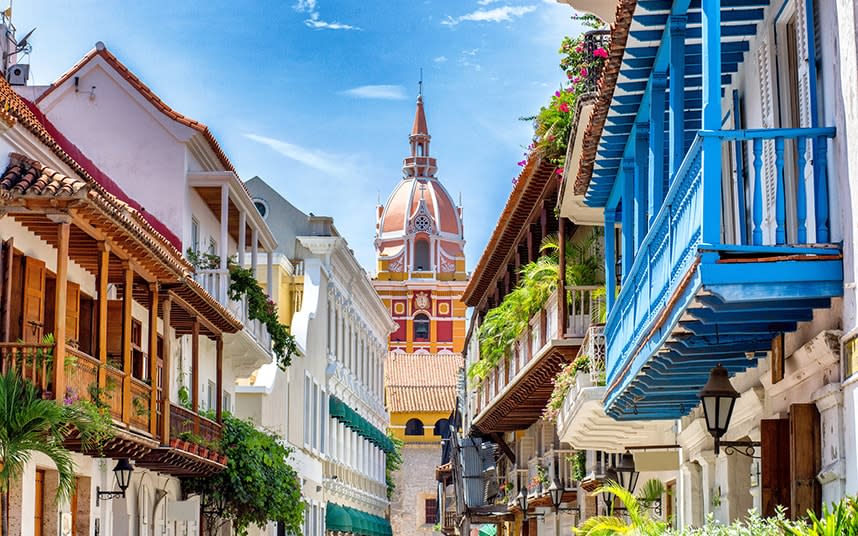
It may be news that has made you wake this morning with a smile on your face and an insistence that 7pm cannot come soon enough. It may equally be the cause of a wish to stay in bed with the curtains closed all day. Or at least until the shouting has ceased.
Either way, it has been impossible to escape the news that England plays Colombia at football this evening in what is the most hotly anticpated World Cup second round fixture since, ooh, well, the Argentina-France clash on Saturday afternoon, probably.
But let's talk a little less about football, and a little more about travel. The key word in the above paragraph is "Colombia". It is the South American country which has suffered dark times, but is also an increasingly fascinating (and secure) destination for those who fancy wandering a few footsteps from the beaten path. And whatever the back-page headlines tomorrow morning, it will remain so - for the following reasons...
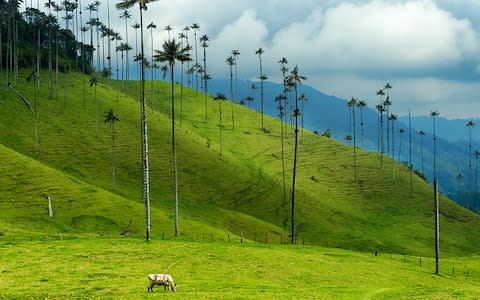
1. It's the comeback kid
You don't need to be a huge expert in the sociopolitical history of Latin America in the last half-century to know that Colombia has not always been a country you would consider as a holiday option. You may have heard about the internecine conflict between guerilla groups and the government that has rumbled on since the mid-Sixties. You will certainly be aware of the wars between drug cartels in Medellin and Cali that made both cities hugely dangerous murder hotspots in the Eighties and Nineties. But you may also have registered the fact that, since the turn of this decade in particular, Colombia has become much safer, resolving many (although admittedly not all) of its thornier issues.
The Foreign and Commonwealth Office (FCO) advice for British travellers acknowledges this. While some areas of the country are still deemed to be off-limits for "all but essential travel", both Medellin and Cali - as well as the capital Bogota and the key coastal metropolis Cartagena - are both within the green zone. "Despite high levels of crime, most visits to Colombia are trouble-free," the FCO adds.
10 places in South America you never thought to visit
2. The fifth biggest city is first-rate
Cartagena is a case in point. For many tourists, it is the reason to visit Colombia. Pitched roughly midway along the country's north-west coast, it still sings of the Spanish Empire, under whose acquisitive eye it was founded - on the orders of conquistador Pedro de Heredia - in 1533. Echoes of the 16th century are many - from the seven miles of walls (first laid down in 1586) which protected the fledgling citadel from predators at sea, to the canary-yellow flanks of the cathedral (officially the Catedral Basílica Metropolitana de Santa Catalina de Alejandría), which dates to 1577.
3. Bogota is an El Dorado of sorts...
The Spanish who flocked to the new horizons of Latin America in the 16th century did so partly because they believed it contained El Dorado - a city of gold. Although the conquistadors searched across the continent (and into Central America), Colombia was always deemed one of the most likely locations for this far-fetched financial fantasy. In some ways, it still is. The Museo del Oro (Museum of Gold) in Bogota (full details at banrepcultural.org/bogota/gold-museum) looks at the country's traditonal links to this most shiny of metals, and the role it played in the rituals of the Calima, Quimbaya, Zenú and Muisca peoples (among others). In total, it contains 55,000 artefacts - more than enough to send an average magpie-eyed Renaissance Spaniard into tremors of joy.
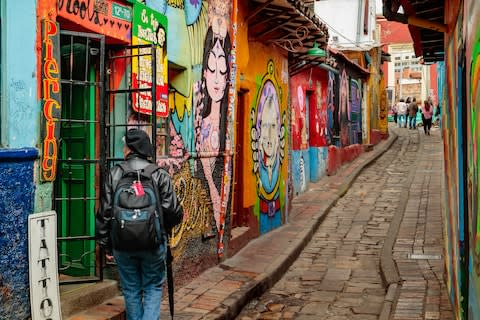
4. ...and a surprisingly pretty city
Perhaps tarnished by the difficulties of the past - such as the attack on the Palace of Justice (the Supreme Court) by Marxist guerillas in 1985 - Bogota has not always enjoyed a most perfumed reputation. It is rarely listed alongside the likes of Paris, London, Rome or Buenos Aires as one of the great capitals of the world. And yet it deserves greater respect as a city of remarkably picturesque contours. Indeed, its setting is among the most dramatic of the planet's major urban enclaves. It sits in the shadow of Montserrate - a peak which hits 10,341ft (3,152m) immediately to the east of the centre. It can be climbed via a funicular railway and a cablecar - both of which whisk locals to the top for weekend strolls and spectacular views (cerromonserrate.com/en).
At a glance | The 20 countries with the most species of bird
5. It is a place for active escapes
Monserrate is part of the Andes. As, indeed, is much of Colombia - the great mountain range of South America runs up it like a spine. This, for those who are so disposed, can make for adventures in high places. Travel Local (0117 325 7898; travellocal.com), for example, sells a 15-day "Active Colombia" break which begins its journey in Bogota - but also ventures to Chicamocha Canyon, a chasm which plunges 6,600ft (2,000 m) at the heart of Chicamocha National Park in north-easterly Santander province. Travellers can trek down the side of a scar in the soil that is deeper than the Grand Canyon in Arizona. The whole holiday costs from £1,940 per person (international flights extra).
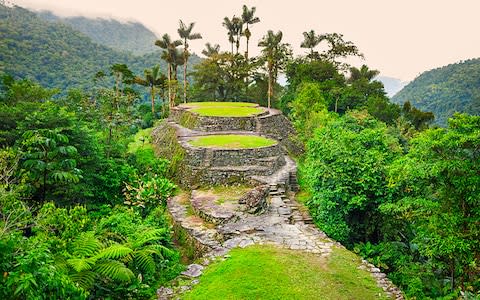
6. It has a lost city...
As Colombia has opened up to tourism in the last decade, so appreciation has grown of the Ciudad Perdida - the Teyuna archaeological site, in the Sierra Nevada mountain range, in Magdalena department in the country's far north. This "lost city" is believed to have been founded at the start of the ninth century (which makes it about 650 years older than Peru's ever-feted Inca citadel Machu Picchu).
Discussion is ongoing as to whether this terraced settlement, cut into a series of hillsides, was ever truly lost - the local Kogui people have said that they were always aware of the site, which was probably abandoned in the wake of the Spanish conquest, having been home to up to 8,000 inhabitants. But it is firmly back on the map as the highlight of a trekking route which takes about a week from A to B and back to A again. Indeed, G Adventures (0344 272 2060; gadventures.co.uk) offers a seven-day "Lost City Trekking" jaunt aimed at travellers aged 18-39 who don't mind the feeling of sweat and soil. From £449 a head, not including flights. Twelve further departures are planned for this year.
Best hotels Colombia
7. ...and a lost people...
While the likely fate of the Ciudad Perdida has been ascertained, less is known about what happened to the residents of what is now San Agustin Archaeological Park (see icanh.gov.co) in south-westerly Huila department. It is the setting for a host of statues and sculptures, bearing the faces - partially human, but partially cut with the snarling characteristics of jaguars, snakes and birds of prey - that, historians say, were tomb guardians, designed to protect graves from any who would disturb those who slept within. They may have been carved between the first and fifth centuries, making them contemporaneous with the Roman Empire. But beyond this, all is guesswork.
The skilled hands that created these works belonged to a civilisation that had vanished by the time the Spanish stomped through these highlands - and they left no written record of who they were. Not even a name - an anonymity that makes the idea of heading south to see the carvings all the more alluring. Last Frontiers sells a 14-day "Diversity and Civilisation" group tour slated for November 10-23 that will call at San Agustin. From £3,740 a head - international flights extra (01296 653000; lastfrontiers.com).
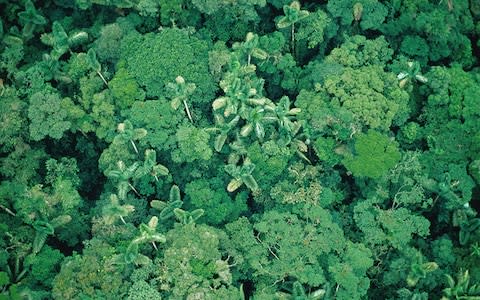
8. ...and a lost region
There are many images of the bitter era in which Colombia found itself in the last dirty decades of the 20th century, but one of the most pertinent is the way that the Darien Gap became a no-go-zone for all but paramilitaries and drug-runners. This, of course, is the infamous "land bridge" between South and Central America - an isthmus which "connects" the Darien province of south-eastern Panama with Choco province in the north-west of Colombia. Why the quotation marks around "connects"? Because this is still a connection in geography only.
Partly because of its troubled existence as a hive of guerilla fighters (an unhappy association which, until recently, regularly saw it described as one of the most dangerous places on the globe), partly because its thick rainforest and swampy ground make it decidedly impenetrable, it is a location through which it is very difficult to pass. Indeed, the Pan-American Highway, which runs from Alaska to Chile, takes a 100-mile break where it hits the Darien - the only gap (hence the name) in some 19,000 miles of road. Of course, the area's reputation has also left it wild and unspoiled. And tour operators are starting to venture in as Colombia's internal conflict cools to a low vibration. Steppes Travel (01258 787 512; steppestravel.com), for example, sells a 14-day "Darien Gap, Caribbean Coast & Medellin" holiday which treks into this final hurrah. From £3,000 per person, not including international flights.
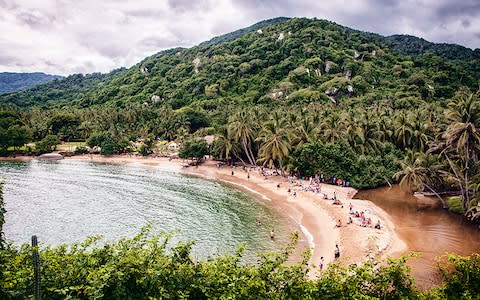
9. It has two coastlines
As well as being remote and intriguing, the Darien isthmus also performs a specific role - dividing the Caribbean Sea from the Pacific Ocean, thus ensuring that Colombia can boast a coast on two major bodies of water. This means that beaches are a far more significant part of its appeal than many travellers appreciate. Llama Travel (020 7263 3000; llamatravel.com) sells a "Treasures of El Dorado + Tayrona Beach" group break which ticks off Bogota, Medellin and Cartagena, but also spends four nights snoozing by the sands of Tayrona Beach, near Santa Marta in Magdalena. From £2,429 per person, including flights from the UK. The next departure is slated for November 16.
10. You can take the wheel
Colombia's arrival in the realm of relatively mainstream travel is perhaps summed up by the fact that you can now book a fly-drive holiday to see it at your own pace. Journey Latin America (020 3553 1773; journeylatinamerica.co.uk) offers "Self-drive Colombia: Exploring the Coffee Region and Beyond" which explores the plantations of the Cordillera Central mountain range west of Bogota under the participants' own steam (or, at least, engine power). "A few years ago, you wouldn’t have thought about driving your own car in Colombia. But now this politically stabilised and utterly enchanting country’s roads welcome overseas drivers," says the holiday's brochure blurb. Well indeed. From £2,275 per person for 12 days; international flights extra.
11. It is home to a man who can do this...
Oh go on then. Just a little bit of football. No matter what happens in the game tonight, Colombia will always be able to count James Rodriguez as one of its own. At the 2014 World Cup in Brazil, he scored the goal of the tournament. It went something like this...

